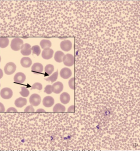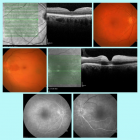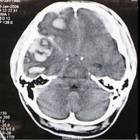Abstract
Research Article
Gender-specific associations of anthropometric measures of adiposity with blood pressure and hypertension in young Chinese Medical College Students
Li-Hua Li*, Navin Kumar Sah, Qing-Tao Zhang, Yong-Gang Li and Xue-Yan Yin
Published: 31 January, 2020 | Volume 5 - Issue 1 | Pages: 017-023
Purpose: There are uncertainties about whether general or central obesity is the more important determinant for blood pressure and hypertension in young Chinese. We aim to investigate the association between adiposity measures and blood pressure and hypertension in young medical students.
Methods: A total of 380 medical students were recruited from the 2012 batch in the Clinical College of Dali University. Anthropometric measures and office blood pressure were measured. Blood pressure status was defined by Chinese hypertension guidelines and ACC/AHA 2017 hypertension guidelines, respectively. We examined the associations of adiposity measures (body weight, body mass index [BMI], waist circumference, hip circumference, waist-to-hip ratio [WHR], waist-to-height ratio [WHtR], ponderal index [PI], body adiposity index (BAI) and conicity index [CI]) with blood pressure and hypertension by sex.
Results: In 380 subjects (women 66.6%, mean age 21.5 years), the prevalence of obesity (BMI ≥ 28 kg/m2) was 2.1%, and the prevalence of hypertension was 2.6% (≥ 140/90 mmHg) and 24.5% (≥ 130/80 mmHg), respectively. In correlation analyses and multivariable-adjusted linear regression analyses, most adiposity measures of central obesity were significantly associated with blood pressure in men, while in women, either adiposity measures of central or general obesity were associated with blood pressure. The predictive power of adiposity measures for hypertension was generally low in men. However, adiposity measures of either general obesity or central obesity were predictive for hypertension defined by Chinese hypertension guidelines in women.
Conclusion: There are gender-specific associations of central and general obesity with blood pressure and hypertension in young Chinese medical students.
Read Full Article HTML DOI: 10.29328/journal.jccm.1001080 Cite this Article Read Full Article PDF
Keywords:
Obesity; Anthropometry; Blood pressure; Hypertension; Chinese
References
- Xi B, Liang Y, He T, Reilly KH, Hu Y, et al. Secular trends in the prevalence of general and abdominal obesity among Chinese adults, 1993-2009. Obes Rev. 2012; 13: 287-296. PubMed: https://www.ncbi.nlm.nih.gov/pubmed/22034908
- NCD Risk Factor Collaboration (NCD-RisC). Rising rural body-mass index is the main driver of the global obesity epidemic in adults. Nature. 2019; 569: 260-264. PubMed: https://www.ncbi.nlm.nih.gov/pubmed/31068725
- Wang L, Du S, Wang H, Popkin BM. Influence of dietary fat intake on bodyweight and risk of obesity among Chinese adults, 1991–2015: a prospective cohort study. The Lancet. 2018; 392: S20.
- Joint Committee for Guideline Revision. 2018 Chinese Guidelines for Prevention and Treatment of Hypertension-A report of the Revision Committee of Chinese Guidelines for Prevention and Treatment of Hypertension. J Geriatr Cardiol. 2019; 16: 182-241. PubMed: https://www.ncbi.nlm.nih.gov/pmc/articles/PMC6500570/
- He Y, Pan A, Wang Y, Yang Y, Xu J, et al. Prevalence of overweight and obesity in 15.8 million men aged 15-49 years in rural China from 2010 to 2014. Sci Rep. 2017; 7: 5012. PubMed: https://www.ncbi.nlm.nih.gov/pubmed/28694524
- Urquidez Romero R, Murguia Romero M, Esparza Romero J, Diaz Torres BA, Rodriguez Tadeo A, et al. Abdominal obesity is strongly associated to blood pressure in young Mexicans. Nutr Hosp. 2017; 34: 357-362. PubMed: https://www.ncbi.nlm.nih.gov/pubmed/28421790
- Smith LA, O'Flanagan CH, Bowers LW, Allott EH, Hursting SD. Translating Mechanism-Based Strategies to Break the Obesity-Cancer Link: A Narrative Review. J Acad Nutr Diet. 2018; 118: 652-667. PubMed: https://www.ncbi.nlm.nih.gov/pmc/articles/PMC5869082/
- Darke S, Duflou J, Kaye S, Farrell M, Lappin J. Body mass index and fatal stroke in young adults: A national study. J Forensic Leg Med. 2019; 63: 1-6. PubMed: https://www.ncbi.nlm.nih.gov/pubmed/30822741
- Kopelman PG. Obesity as a medical problem. Nature. 2000; 404: 635-643. PubMed: https://www.ncbi.nlm.nih.gov/pubmed/10766250
- Wu O, Leng JH, Yang FF, Yang HM, Zhang H, et al. A comparative research on obesity hypertension by the comparisons and associations between waist circumference, body mass index with systolic and diastolic blood pressure, and the clinical laboratory data between four special Chinese adult groups. Clin Exp Hypertens. 2018; 40: 16-21. PubMed: https://www.ncbi.nlm.nih.gov/pubmed/29083240
- Taing KY, Farkouh ME, Moineddin R, Tu JV, Jha P. Age and sex-specific associations of anthropometric measures of adiposity with blood pressure and hypertension in India: a cross-sectional study. BMC Cardiovasc Disord. 2016; 16: 247. PubMed: https://www.ncbi.nlm.nih.gov/pmc/articles/PMC5134088/
- Dong J, Ni YQ, Chu X, Liu YQ, Liu GX, et al. Association between the abdominal obesity anthropometric indicators and metabolic disorders in a Chinese population. Public Health. 2016; 131: 3-10. PubMed: https://www.ncbi.nlm.nih.gov/pubmed/26576475
- Chaudhary S, Alam M, Singh S, Deuja S, Karmacharya P, et al. Correlation of Blood Pressure with Body Mass Index, Waist Circumference and Waist by Hip Ratio. J Nepal Health Res Counc. 2019; 16: 410-413. PubMed: https://www.ncbi.nlm.nih.gov/pubmed/30739931
- Li N, Yang T, Yu WQ, Liu H. Is Waist-to-Height Ratio Superior to Body Mass Index and Waist Circumference in Predicting the Incidence of Hypertension? Ann Nutr Metab. 2019; 74: 215-223. PubMed: https://www.ncbi.nlm.nih.gov/pubmed/30889583
- Middlemiss JE, Miles KL, McDonnell BJ, Yasmin, Maki-Petaja KM, et al. Mechanisms underlying elevated SBP differ with adiposity in young adults: the Enigma study. J Hypertens. 2016; 34: 290-297. PubMed: https://www.ncbi.nlm.nih.gov/pubmed/26682781
- Zhao D, Li Y, Zheng L, Yu K. Brief communication: Body mass index, body adiposity index, and percent body fat in Asians. Am J Phys Anthropol. 2013; 152: 294-299. PubMed: https://www.ncbi.nlm.nih.gov/pubmed/23996556
- Chen GC, Arthur R, Iyengar NM, Kamensky V, Xue X, et al. Association between regional body fat and cardiovascular disease risk among postmenopausal women with normal body mass index. Eur Heart J. 2019; 40: 2849-2855. PubMed: https://www.ncbi.nlm.nih.gov/pubmed/31256194
- Malden D, Lacey B, Emberson J, Karpe F, Allen N, et al. Body Fat Distribution and Systolic Blood Pressure in 10,000 Adults with Whole-Body Imaging: UK Biobank and Oxford BioBank. Obesity. 2019; 27: 1200-1206. PubMed: https://www.ncbi.nlm.nih.gov/pubmed/31081601
- van den Munckhof ICL, Holewijn S, de Graaf J, Rutten JHW. Sex differences in fat distribution influence the association between BMI and arterial stiffness. J Hypertens. 2017; 35: 1219-1225. PubMed: https://www.ncbi.nlm.nih.gov/pubmed/28441693
- Rimarova K, Dorko E, Diabelkova J, Sulinova Z, Frank K, et al. Anthropometric predictors of systolic and diastolic blood pressure considering intersexual differences in a group of selected schoolchildren. Cent Eur J Public Health. 2018; 26 Suppl: S4-S11. PubMed: https://www.ncbi.nlm.nih.gov/pubmed/30817866
- Whelton PK, Carey RM, Aronow WS, Casey DE, Jr., Collins KJ, et al. 2017 ACC/AHA/AAPA/ABC/ACPM/AGS/APhA/ASH/ASPC/NMA/PCNA Guideline for the Prevention, Detection, Evaluation, and Management of High Blood Pressure in Adults: A Report of the American College of Cardiology/American Heart Association Task Force on Clinical Practice Guidelines. Hypertension. 2018; 71: e13-e115. PubMed: https://www.ncbi.nlm.nih.gov/pubmed/29133354
- Wang Z, Chen Z, Zhang L, Wang X, Hao G, et al. Status of Hypertension in China: Results from the China Hypertension Survey, 2012-2015. Circulation. 2018. 37: 2344-2356. PubMed: https://www.ncbi.nlm.nih.gov/pubmed/29449338
- Geer EB, Shen W. Gender differences in insulin resistance, body composition, and energy balance. Gend Med. 2009; 6 Suppl 1: 60-75. PubMed: https://www.ncbi.nlm.nih.gov/pubmed/19318219
- Haraguchi N, Koyama T, Kuriyama N, Ozaki E, Matsui D, et al. Assessment of anthropometric indices other than BMI to evaluate arterial stiffness. Hypertens Res. 2019; 42: 1599-1605. PubMed: https://www.ncbi.nlm.nih.gov/pubmed/31019248
- Sebekova K, Csongova M, Gurecka R, Krivosikova Z, Sebek J. Gender Differences in Cardiometabolic Risk Factors in Metabolically Healthy Normal Weight Adults with Central Obesity. Exp Clin Endocrinol Diabetes. 2018; 126: 309-315. PubMed: https://www.ncbi.nlm.nih.gov/pubmed/29117621
- Hall JE, do Carmo JM, da Silva AA, Wang Z, Hall ME. Obesity-induced hypertension: interaction of neurohumoral and renal mechanisms. Circ Res. 2015; 116: 991-1006. PubMed: https://www.ncbi.nlm.nih.gov/pubmed/25767285
- Faulkner JL, Belin de Chantemele EJ. Sex Differences in Mechanisms of Hypertension Associated With Obesity. Hypertension. 2018; 71: 15-21. PubMed: https://www.ncbi.nlm.nih.gov/pubmed/29133358
- Kotsis V, Stabouli S, Papakatsika S, Rizos Z, Parati G. Mechanisms of obesity-induced hypertension. Hypertens Res. 2010;33:386-93. PubMed: https://www.ncbi.nlm.nih.gov/pubmed/20442753
Similar Articles
-
Short and Medium-Term Evaluation of Patients in Coronary Post-Angioplasty: Préliminary results at the Cardiology Department of the Hospital University Aristide Le Dantec of Dakar (Senegal): Study on 38 CasesDioum M*,Aw F,Masmoudi K,Gaye ND,Sarr SA,Ndao SCT, Mingou J,Ngaidé AA,Diack B,Bodian M,Ndiaye MB,Diao M,Ba SA. Short and Medium-Term Evaluation of Patients in Coronary Post-Angioplasty: Préliminary results at the Cardiology Department of the Hospital University Aristide Le Dantec of Dakar (Senegal): Study on 38 Cases. . 2017 doi: 10.29328/journal.jccm.1001006; 2: 008-012
-
Indications and Results of Coronarography in Senegalese Diabetic Patients: About 45 CasesNdao SCT*,Gaye ND,Dioum M,Ngaide AA,Mingou JS,Ndiaye MB, Diao M,Ba SA. Indications and Results of Coronarography in Senegalese Diabetic Patients: About 45 Cases. . 2017 doi: 10.29328/journal.jccm.1001007; 2: 013-019
-
Non-hemodynamic factors associated to the risk of developing hypertensive cardiopathyAlexis Álvarez-Aliaga*,Julio César González-Aguilera,Liliana del Rosario Maceo-Gómez,Lic David del Llano Sosa,Raúl Leyva-Castro,Rosa Ojeda-Vázquez. Non-hemodynamic factors associated to the risk of developing hypertensive cardiopathy. . 2017 doi: 10.29328/journal.jccm.1001017; 2: 068-084
-
Lipid-induced cardiovascular diseasesSumeet Manandhar,Sujin Ju,Dong-Hyun Choi,Heesang Song*. Lipid-induced cardiovascular diseases. . 2017 doi: 10.29328/journal.jccm.1001018; 2: 085-094
-
Design and validation of an Index to predict the development of Hypertensive CardiopathyAlexis Álvarez-Aliaga*,Andrés José Quesada-Vázquez,Alexis Suárez-Quesada,David de Llano Sosa. Design and validation of an Index to predict the development of Hypertensive Cardiopathy. . 2018 doi: 10.29328/journal.jccm.1001022; 3: 008-022
-
Endogenous sensitizer of beta-adrenergic receptors (ESBAR) and its analogs (review)Victor Tsirkin*,Alexander Nozdrachev,Elena Sizova,Tatyana Polezhaeva,Svetlana Khlybova,Marina Morozova,Andrew Trukhin,Julia Korotaeva,Grigory Khodyrev. Endogenous sensitizer of beta-adrenergic receptors (ESBAR) and its analogs (review). . 2018 doi: 10.29328/journal.jccm.1001028; 3: 064-078
-
Is there an ideal blood pressure during cardiopulmonary bypass to prevent postoperative cerebral injury? – What does the recent evidence say?Ahmed Zaky*. Is there an ideal blood pressure during cardiopulmonary bypass to prevent postoperative cerebral injury? – What does the recent evidence say?. . 2018 doi: 10.29328/journal.jccm.1001031; 3: 104-105
-
Diagnostic accuracy of TIMI versus GRACE score for prediction of death in patients presenting with Acute Non-ST Elevation Myocardial Infarction (NSTEMI)Syed Haseeb Raza Naqvi,Tariq Abbas,Han Naung Tun*,Ali Ahmad Naqvi,Zubair Zaffar,Badar ul Ahad Gill,Nisar Ahmad. Diagnostic accuracy of TIMI versus GRACE score for prediction of death in patients presenting with Acute Non-ST Elevation Myocardial Infarction (NSTEMI). . 2019 doi: 10.29328/journal.jccm.1001032; 4: 001-005
-
Acute viral myocarditis due to Influenza H3N2 infection resembling an acute coronary syndrome: A case reportCarlos Jesus Rodriguez-Zuñiga*,Leonel Martínez-Ramírez,Carlos Alberto Guizar-Sanchez,Mauricio Quetzal Trejo-Mondragon,Nilda Espinola-Zavaleta. Acute viral myocarditis due to Influenza H3N2 infection resembling an acute coronary syndrome: A case report. . 2019 doi: 10.29328/journal.jccm.1001039; 4: 041-042
-
Cardiomyopathies - The special entity of myocarditis and inflammatory cardiomyopathyFelicitas Escher*,Uwe Kühl,Dirk Lassner,Heinz-Peter Schultheiss. Cardiomyopathies - The special entity of myocarditis and inflammatory cardiomyopathy. . 2019 doi: 10.29328/journal.jccm.1001041; 4: 053-070
Recently Viewed
-
Exophthalmos Revealing a Spheno Temporo Orbital MeningiomaHassina S*, Krichene MA, Hazil Z, Bekkar B, Hasnaoui I, Robbana L, Bardi S, Akkanour Y, Serghini L, Abdallah EL. Exophthalmos Revealing a Spheno Temporo Orbital Meningioma. Int J Clin Exp Ophthalmol. 2024: doi: 10.29328/journal.ijceo.1001055; 8: 001-003
-
Value of electrocardiographic T wave inversion in lead aVL in prediction of Mid Left Anterior Descending Stenosis in patients with stable Coronary Artery diseaseGehan Magdy*,Awad Yousef. Value of electrocardiographic T wave inversion in lead aVL in prediction of Mid Left Anterior Descending Stenosis in patients with stable Coronary Artery disease. J Cardiol Cardiovasc Med. 2017: doi: 10.29328/journal.jccm.1001015; 2: 056-062
-
Calciphylaxis in HemodialysisLuca Sgarabotto*, Paola Baldini Anastasio, Nicola Marchionna, Monica Zanella. Calciphylaxis in Hemodialysis. J Clini Nephrol. 2023: doi: 10.29328/journal.jcn.1001107; 7: 044-046
-
Metabolic syndrome: A case reportDragan Klaric,Marta Martinis*,Marta Klaric. Metabolic syndrome: A case report. Ann Clin Endocrinol Metabol. 2021: doi: 10.29328/journal.acem.1001022; 5: 031-035
-
Utilization of Molecular Simulation Applications for Stability Testing of Anthocyanin Compounds in Black ElderberryRichard Benedict*. Utilization of Molecular Simulation Applications for Stability Testing of Anthocyanin Compounds in Black Elderberry. Arch Biotechnol Biomed. 2023: doi: 10.29328/journal.abb.1001035; 7: 012-017
Most Viewed
-
Evaluation of Biostimulants Based on Recovered Protein Hydrolysates from Animal By-products as Plant Growth EnhancersH Pérez-Aguilar*, M Lacruz-Asaro, F Arán-Ais. Evaluation of Biostimulants Based on Recovered Protein Hydrolysates from Animal By-products as Plant Growth Enhancers. J Plant Sci Phytopathol. 2023 doi: 10.29328/journal.jpsp.1001104; 7: 042-047
-
Sinonasal Myxoma Extending into the Orbit in a 4-Year Old: A Case PresentationJulian A Purrinos*, Ramzi Younis. Sinonasal Myxoma Extending into the Orbit in a 4-Year Old: A Case Presentation. Arch Case Rep. 2024 doi: 10.29328/journal.acr.1001099; 8: 075-077
-
Feasibility study of magnetic sensing for detecting single-neuron action potentialsDenis Tonini,Kai Wu,Renata Saha,Jian-Ping Wang*. Feasibility study of magnetic sensing for detecting single-neuron action potentials. Ann Biomed Sci Eng. 2022 doi: 10.29328/journal.abse.1001018; 6: 019-029
-
Pediatric Dysgerminoma: Unveiling a Rare Ovarian TumorFaten Limaiem*, Khalil Saffar, Ahmed Halouani. Pediatric Dysgerminoma: Unveiling a Rare Ovarian Tumor. Arch Case Rep. 2024 doi: 10.29328/journal.acr.1001087; 8: 010-013
-
Physical activity can change the physiological and psychological circumstances during COVID-19 pandemic: A narrative reviewKhashayar Maroufi*. Physical activity can change the physiological and psychological circumstances during COVID-19 pandemic: A narrative review. J Sports Med Ther. 2021 doi: 10.29328/journal.jsmt.1001051; 6: 001-007

HSPI: We're glad you're here. Please click "create a new Query" if you are a new visitor to our website and need further information from us.
If you are already a member of our network and need to keep track of any developments regarding a question you have already submitted, click "take me to my Query."
























































































































































